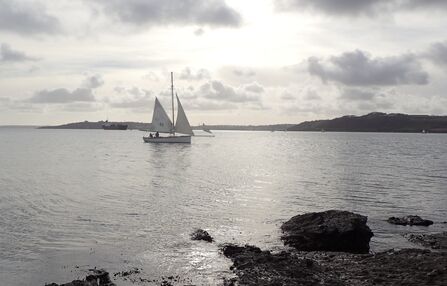Fal oysters are native oysters harvested in the traditional way, under sail and oar, within the Fal Estuary and Truro River. The Fal oyster fishery is unique: local byelaws banned the use of engines more than a century ago, effectively freezing the fishery in time and preventing the overfishing that has devastated native oyster stocks elsewhere in the UK.
Today, the Fal fishery is the last remaining viable native oyster fishery in the country, and it remains central to the heritage, culture, and economy of the Fal and Truro river.

